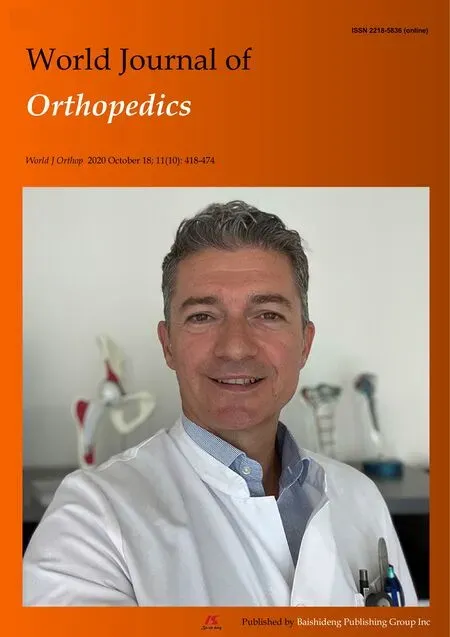Trochanteric bursitis information on the internet; can we trust the information presented?
Richard Tyrrell, Martin Kelly, Cian Kennedy
Richard Tyrrell, Martin Kelly, Cian Kennedy, Department of Trauma and Orthopaedics, University Hospital Limerick, Limerick V94 F858, Ireland
Abstract
Key Words: Internet; Quality; Readability; DISCERN; Journal of American Medical Association; Flesh Reading Ease
TO THE EDITOR
The internet’s usage has massively increased in the last number of years with over 85% of the American population having access to it[1]. In this modern age with the rise of the internet, we face an ever growing population of self-educated patients. This presents a new challenge for doctors as the quality of information on the internet is variable and could lead to misinformed patients.
We recently reviewed the quality of internet-based information of a commonly encountered hip pathology: Trochanteric bursitis. We used this search term to look at the first 50 websites from the top five search engines. A total of 107 websites were analysed after removing duplicates and inaccessible sites. We used three quality scoring systems: The DISCERN scoring system, theJournal of American Medical Association(JAMA) and HON code certification[2-4]. The readability of each website was also assessed using the Flesh Reading Ease (FRE) score and the Flesh Kincaid grade level.
When analysing sites about Trochanteric bursitis, the mean DISCERN score was 49.3 (SD 13.7),JAMAwas 1 (SD 1.39). The websites with the highest DISCERN andJAMAscores were the Academic and Physician led websites which showed a significant difference in the quality when compared to commercial or discussion/social media websites (P< 0.001). A stark contrast was also seen in the readability of each website with the commercial/social media websites being significantly easier to read with mean FRE score being 57 (SD 11.3) and FKGL score being 7.6 (SD 1.7) when compared to the academic or physician led websites which had a significant lower readability (P< 0.001).
Notably only 14 of the 107 websites looked at had HON code certifications and these were the academic or physician led websites. We noticed that there was a correlation between increasedJAMAand DISCERN scores and sites with HON code certifications therefore leading us to believe that sites with HON code certification were of a higher quality.
Amanteet al[5]demonstrated that people experiencing trouble accessing health care are more likely obtain health information from the Internet. This is particularly worrying when you look at the results of our study as patients who chose nonacademic and non-physician led websites as their source of information are more likely to get lower quality information.
In conclusion, we propose that surgeons and clinicians recommend a select number of websites to that are of high quality and also have a high readability in order for patients who are interested be able to expand their understanding of their condition with high quality resources.
 World Journal of Orthopedics2020年10期
World Journal of Orthopedics2020年10期
- World Journal of Orthopedics的其它文章
- Conversion to reverse shoulder arthroplasty fifty-one years after shoulder arthrodesis: A case report
- Long-term effect of intrathecal baclofen treatment on bone health and body composition after spinal cord injury: A case matched report
- Highly cross-linked versus conventional polyethylene inserts in total hip arthr oplasty, a five-year Roentgen stereophotogrammetric analysis randomised controlled trial
- Early clinical outcome and learning curve following unilateral primary total knee arthroplasty after introduction of a novel total knee arthroplasty system
- Mortality following combined fractures of the hip and proximal humerus
- Association of vitamin D and knee osteoarthritis in younger individuals
